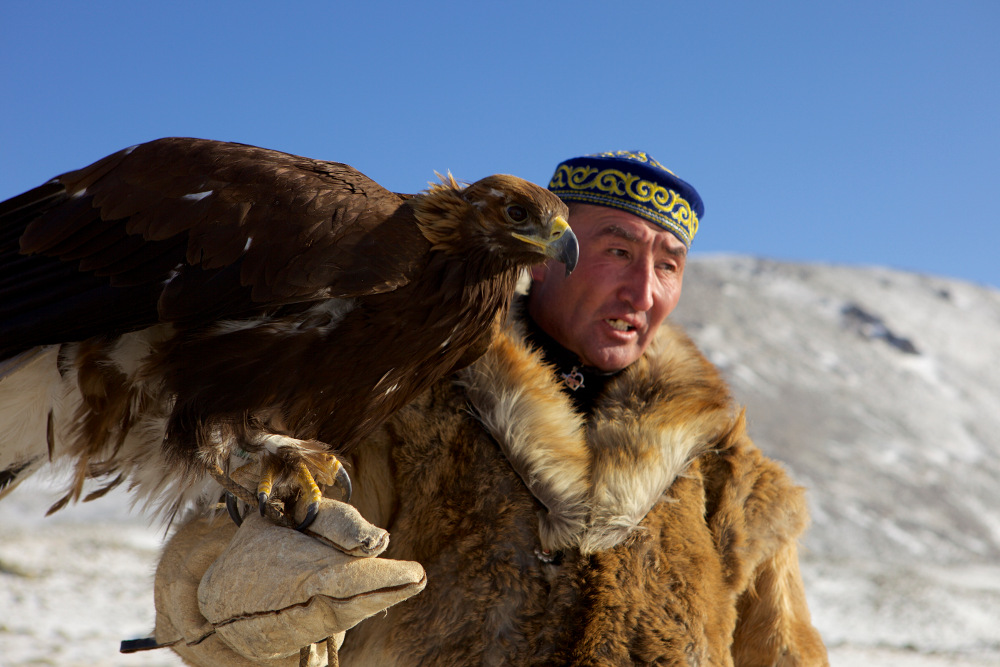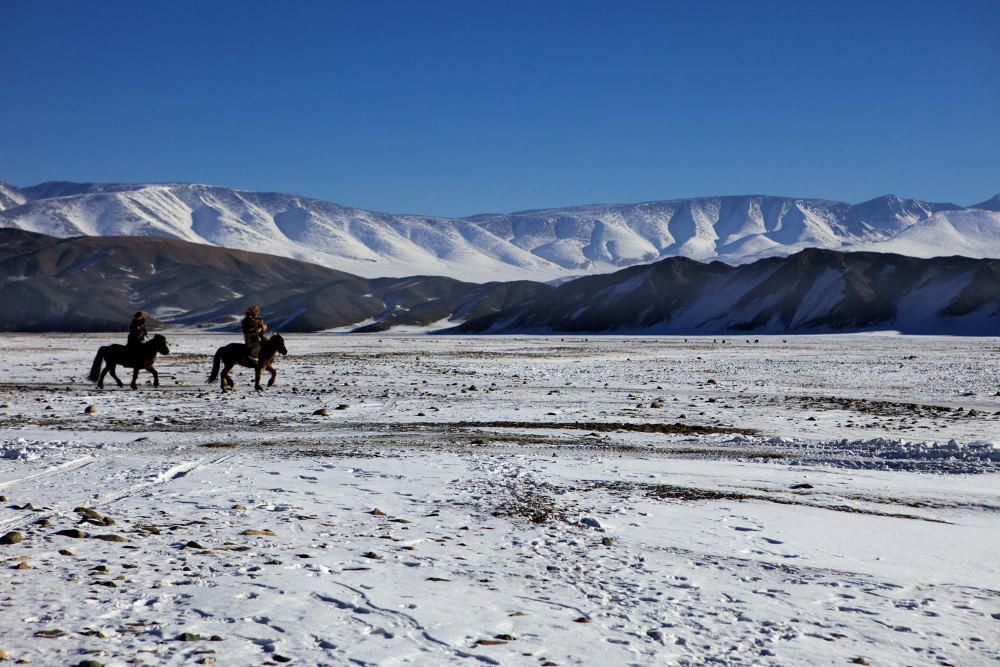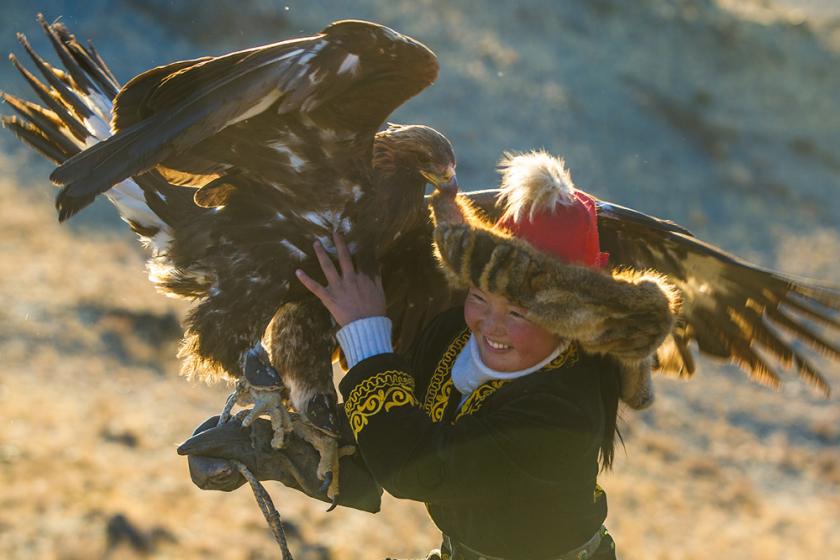Thirteen-year-old Aishopan desperately wants to be an eagle hunter. The problem is, she’s a girl. And in the traditional Mongolian nomadic community where she lives, rearing a golden eagle chick to hunt foxes for their fur is very much the preserve of men.
British director Otto Bell’s sumptuous film is certainly an inspirational story of struggle and triumph, and it’s set against an arrestingly unfamiliar context – the icy peaks and frozen rivers at the crossroads between Mongolia, Kazakhstan, China and Russia. It’s a warm-hearted offering, almost to a fault – indeed, its set-pieces and lavish camerawork make it feel more feature than documentary – that charts the young Aishopan’s quiet determination to pursue her passion. And by her looks of unmitigated delight as she begins to train her eagle, a passion it clearly is. To demonstrate the villains of his story, Bell contrasts her enthusiasm with a remarkable sequence of fur-hatted elders shaking their heads at the audacity of this girl daring to step into their male-only world.
 It’s all beautifully delivered, family-friendly (except perhaps for the slaughtering of a sheep early on), and with a stirring message of equality and determination. And although The Eagle Huntress may not exactly challenge our preconceptions of exotic, yurt-inhabiting, horse-riding Mongolian nomads, it at least fills in some unexpected modern details – motorbikes, solar panels, and Aishopan’s rustic boarding school and the gaggle of excitable teenagers who share its dormitory.
It’s all beautifully delivered, family-friendly (except perhaps for the slaughtering of a sheep early on), and with a stirring message of equality and determination. And although The Eagle Huntress may not exactly challenge our preconceptions of exotic, yurt-inhabiting, horse-riding Mongolian nomads, it at least fills in some unexpected modern details – motorbikes, solar panels, and Aishopan’s rustic boarding school and the gaggle of excitable teenagers who share its dormitory.
Bell examines Aishopan’s warm, close relationship with her father Nurgaiv (pictured above) in tender detail. He’s an eagle hunter himself, with generations of tradition behind him, and entirely supportive of his daughter’s seemingly natural talent without being pushy. Their closeness emerges most touchingly – and dramatically – in the film’s pivotal eaglet-stealing scene, where Aishopan dangles precariously off a mountainside from a rope wrapped equally precariously around her father’s body, in order to snare what becomes her hunting bird.
Most memorable of all, though, is veteran nature photographer Simon Niblett’s astonishing cinematography of the Mongolian mountains and steppes (pictured below), often breathtaking in its endless vistas – and achieved with some stunning aerial shots from drones and cranes.
 But for all its ravishing camerawork and its inspirational message, there are some deep ironies here. The biggest one is the seeming lack of serious opposition to Aishopan taking part in the film’s climactic hunting competition – aside from a few frowns and raised eyebrows from the other competitors, hunters and judges alike actually seem amused and then impressed by her abilities. Other than the elders’ gentle disapproval, Bell simply doesn’t delve deeply enough into the nomadic society’s gender issues to explore any beliefs behind resistance to Aishopan’s ambitions. In fact, it’s Aishopan’s mother – who seems to have quite a distant, almost subservient relationship to both her husband and daughter – who most clearly embodies women’s rather restricted status.
But for all its ravishing camerawork and its inspirational message, there are some deep ironies here. The biggest one is the seeming lack of serious opposition to Aishopan taking part in the film’s climactic hunting competition – aside from a few frowns and raised eyebrows from the other competitors, hunters and judges alike actually seem amused and then impressed by her abilities. Other than the elders’ gentle disapproval, Bell simply doesn’t delve deeply enough into the nomadic society’s gender issues to explore any beliefs behind resistance to Aishopan’s ambitions. In fact, it’s Aishopan’s mother – who seems to have quite a distant, almost subservient relationship to both her husband and daughter – who most clearly embodies women’s rather restricted status.
It was probably a bit of a mistake, too, to use the rather mannered, disconcertingly on-off commentary from British actor Daisy Ridley (of Star Wars: The Force Awakens fame – also credited as an executive producer), who contributes so sporadically that each time she cuts in, you’d forgotten that there was a narrator at all.
There’s the unavoidable feeling by the end that reality has failed to delivery on Bell’s girl-against-the-world storyline. And his film’s rather paradoxical views on tradition – crucial to his picturesque portrayal of the nomads’ broader lives, but something to be challenged and subverted in Aishopan’s eagle-hunting ambitions – make it all the more problematic.















Add comment